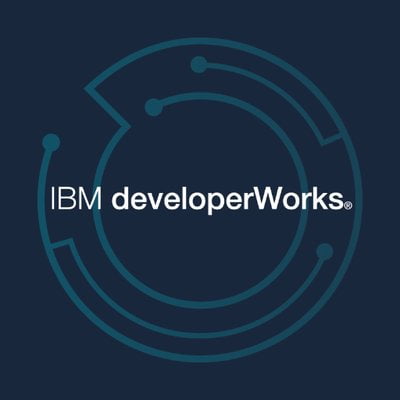Comprehensive Guide to Kodi: The Ultimate Open-Source Media Player
Kodi, originally known as XBMC (Xbox Media Center), has established itself as one of the premier open-source media server software solutions compatible with multiple platforms including Linux, Windows, macOS, iOS, Android, and even Raspberry Pi. In this comprehensive guide, we will delve deeper into Kodi, exploring its features, installation process on various Linux distributions like Ubuntu, and how you can elevate your media consumption experience while using Kodi.
What is Kodi?
Kodi is a powerful media player that enables users to organize, play, and stream an extensive range of media files. Whether you want to enjoy your favorite music, movies, TV shows, or photos, Kodi offers a user-friendly interface that beautifully displays all your media. Furthermore, Kodi allows users to access online streaming platforms such as YouTube, Netflix, Hulu, and Prime Video, all from within the application, making it an incredibly versatile option for media consumption.
Key Features of Kodi
- Wide Platform Compatibility: Install Kodi on virtually any device, including Android TV boxes, smart TVs, and Raspberry Pi.
- Customizable Interface: Users can choose from various skins and themes to personalize their Kodi experience.
- Extensive Add-on Library: Kodi has a vast repository of add-ons that expand its functionality, allowing users to access various content sources.
- Local and Remote Media Access: Effortlessly stream media from both local storage and remote networks.
- Support for Multiple Formats: Kodi supports a broad range of video and audio formats, ensuring users can enjoy their favorite content without hassle.
Installing the Latest Version of Kodi on Ubuntu
Why Choose PPA for Installation?
Most Linux distributions, including Ubuntu, have Kodi available in their default repositories. However, the version included is often outdated, lacking the latest features and improvements. To harness the full power of Kodi, installing from the official Kodi PPA (Personal Package Archive) is highly recommended.
Step-by-Step Installation Guide
Whether you are a seasoned Linux user or a newcomer, installing Kodi on Ubuntu is straightforward. Follow these steps to get the latest version of Kodi on your system:
-
Open Terminal: Use the shortcut
Ctrl + Alt + Tto open a terminal window. -
Add the Official PPA: Run the following command to add the Kodi PPA repository:
sudo add-apt-repository ppa:team-xbmc/ppa -
Update Package Cache: Ensure your package manager is aware of the new repository by running:
sudo apt update -
Install Kodi: Now, install Kodi by executing:
sudo apt install kodiNote: If you had an older version of Kodi, it will automatically be upgraded to the newer version from the PPA. The download size is approximately 100 MB.
- Launch Kodi: Once installed, you can find Kodi in your application menu. Open it, and you’re ready to start enjoying your media.
Installing Kodi Add-ons
To enhance your Kodi experience, consider installing additional add-ons. For instance, to install audio encoder add-ons, use this command:
sudo apt-get install kodi-audioencoder-* kodi-pvr-*For a comprehensive list of available add-ons, visit the Kodi add-on repository.
Removing Kodi from Your System
If, for any reason, you wish to uninstall Kodi, you can do so effortlessly via the terminal. Here’s how:
-
Remove Kodi:
sudo apt remove kodi - Delete the PPA:
sudo add-apt-repository --remove ppa:team-xbmc/ppa
This ensures your system remains clean from unnecessary packages and repositories.
Elevate Your Kodi Experience: The Best Kodi Boxes
While Kodi is a phenomenal media player, enhancing your experience requires choosing the right device. If you’re serious about media consumption, investing in the best Kodi boxes can significantly improve performance, streaming quality, and user interface.
What to Look for in the Best Kodi Boxes
- Performance: Look for devices with robust processors and adequate RAM for smooth operation.
- Storage: Select devices that offer sufficient storage options for your media library.
- Compatibility: Ensure the device supports the latest version of Kodi and meets all necessary hardware requirements.
- Connectivity Options: Multiple HDMI ports and USB connections enhance the versatility of your setup.
- Future-Proofing: Opt for devices that support 4K streaming and future technological advancements.
For an exclusive list of the best Kodi boxes currently available, check out our guide on the best Kodi boxes and discover the top devices to enhance your Kodi experience.
Conclusion
In summary, Kodi is one of the most versatile and comprehensive open-source media players available today. It allows you to organize and stream your media seamlessly, whether from local sources or online streaming platforms. By installing the latest version of Kodi on your Linux system through the official PPA repository, you can enjoy the best features it has to offer.
Moreover, to fully leverage your Kodi experience, consider investing in the best Kodi boxes. These devices are purpose-built, providing the performance and compatibility required for optimal streaming.
Don’t hesitate to explore the recommended best Kodi boxes and elevate your entertainment experience. Happy streaming!




